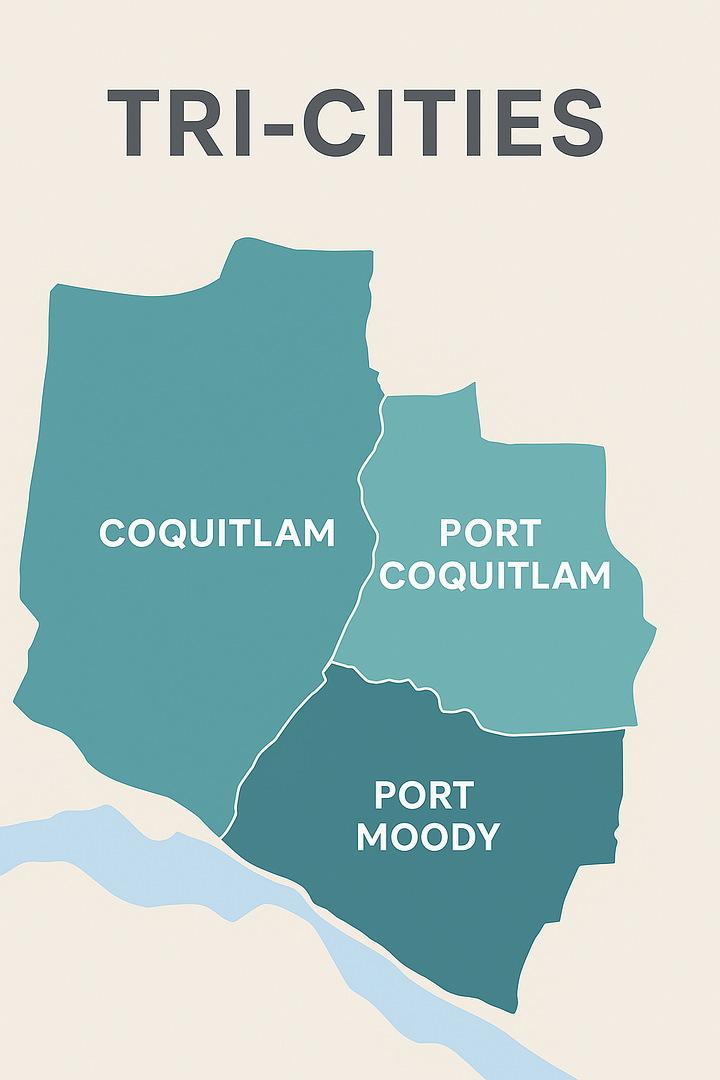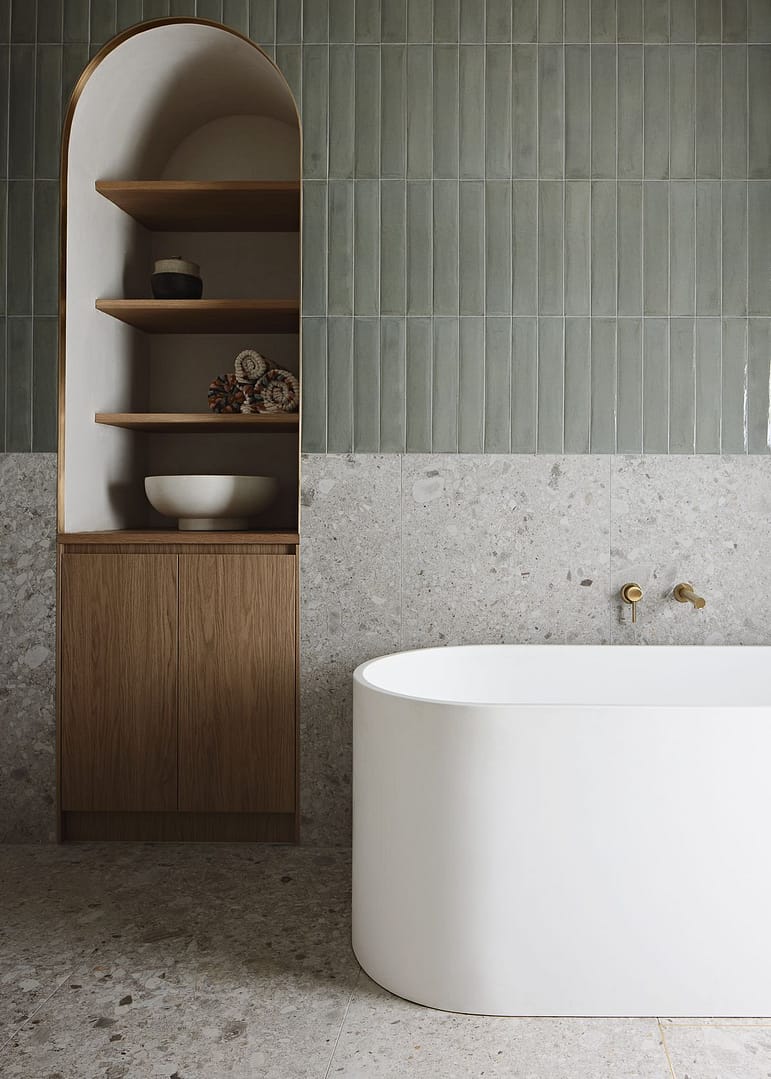
- Kitchen
Boho Kitchen Design: Creating A Free-Spirited Culinary Haven
- By matin@quayconstruction.ca
Table of Contents
Did you know that bohemian design originated in post-revolutionary France when artists, writers, and performers created unconventional living spaces due to financial necessity? These creative souls transformed their modest quarters into vibrant, personality-filled sanctuaries that defied conventional design rules—giving birth to what we now cherish as Boho kitchen design. This free-spirited aesthetic has since evolved from an improvised style born of necessity into one of the most beloved and deliberately cultivated design approaches worldwide.
Boho kitchen design embraces individuality, cultural fusion, and artistic expression. It invites you to break free from rigid design conventions and create a cooking space that truly reflects your personality and travels through life. In this comprehensive guide, we’ll explore how to infuse your culinary haven with bohemian charm while balancing functionality and style.
Whether you’re planning a complete kitchen renovation Vancouver homeowners will envy or seeking inspiration for your next design project, this extensive exploration of bohemian kitchen spaces will equip you with everything needed to create a heart-warming, soul-nourishing kitchen that tells your unique story.
The Rich History of Boho Kitchen Design
The bohemian aesthetic has traveled a fascinating path through design history. The term “bohemian” originally referred to people from Bohemia, a region in the Czech Republic, but quickly evolved to describe the unconventional lifestyle of artists, writers, and intellectuals in 19th century Paris.
From Parisian Garrets to Modern Kitchens
The artistic communities of 1800s Paris lived in modest accommodations, often in poor neighborhoods, where necessity birthed creativity. These early bohemians adorned their spaces with found objects, handcrafted items, and treasures collected during travels. They mixed patterns, textures, and cultural influences without adhering to formal design principles.
This eclectic approach gradually transformed from a lifestyle born of necessity into a deliberate design choice. By the mid-20th century, bohemian elements had begun appearing in mainstream interior design, though primarily in living spaces rather than kitchens.
The Boho Kitchen Revolution
Boho kitchen design as we know it today truly blossomed during the countercultural movements of the 1960s and 1970s. The era’s rejection of consumer culture and embrace of global influences, natural materials, and handcrafted elements aligned perfectly with bohemian principles.
However, it wasn’t until the early 2000s that bohemian kitchens gained widespread popularity. The rise of social media platforms like Pinterest and Instagram allowed for greater visibility of unique kitchen designs, while growing interest in sustainable living and artisanal goods provided fertile ground for bohemian aesthetics to flourish in culinary spaces.
Today, Boho kitchen design represents not just a visual style but a philosophy that values personal expression, cultural appreciation, sustainability, and the creation of spaces that feel lived-in and loved rather than merely showcasing the latest trends.
Cultural Inspirations Behind Boho Kitchen Design
One of the most captivating aspects of bohemian design is its global perspective. Unlike styles that draw from a single cultural tradition, Boho kitchen design embraces influences from around the world, creating spaces that feel simultaneously exotic and deeply personal.
Moroccan Influences
Morocco’s rich design tradition contributes significantly to bohemian kitchens. Elements like intricate tilework, brass accents, carved wooden details, and vibrant color palettes bring North African flair to boho spaces. Moroccan-inspired pendant lights, patterned tile backsplashes, and colorful ceramics add instant bohemian character to modern kitchens.
Mediterranean Elements
The relaxed elegance of Mediterranean design complements bohemian kitchens beautifully. Open shelving displaying mismatched crockery, herb gardens in terracotta pots, and rustic wooden furniture evoke the casual sophistication of Italian and Greek homes. During your kitchen remodeling Vancouver project, consider incorporating rough-hewn wooden beams or hand-painted tiles for Mediterranean-inspired bohemian charm.
Eastern European Folk Traditions
Patterns and techniques from Eastern European folk art—embroidery, painted ceramics, and carved wooden utensils—add authentic bohemian character, honoring the style’s Czech roots. These heritage-rich elements bring warmth and storytelling potential to contemporary boho kitchens.
Asian Influences
Elements from various Asian design traditions frequently appear in bohemian kitchens. Low seating options, bamboo or rattan furniture, silk textiles, and Eastern philosophical motifs contribute depth and contemplative quality to bohemian spaces.
Latin American Vibrancy
The bold colors, patterns, and craft traditions of Mexico, Peru, Guatemala, and other Latin American countries infuse bohemian kitchens with energy and life. Hand-painted ceramics, woven textiles, and vivid color combinations reflect the region’s creative spirit.
This cultural fusion is central to Boho kitchen design, creating spaces that feel well-traveled and thoughtfully curated rather than mass-produced or catalog-ordered. The key lies in incorporating these diverse elements respectfully while creating a cohesive space that tells your personal story.
Key Elements of Boho Kitchen Design
Creating an authentic bohemian kitchen involves balancing several distinctive elements. Here’s a comprehensive breakdown of the essential components that define Boho kitchen design:
1. Layered Textures and Materials
Texture is paramount in bohemian spaces. In a boho kitchen, you’ll typically find:
- Natural wood in varied finishes and tones
- Woven elements like rattan, bamboo, and wicker
- Textiles including macramé, embroidered fabrics, and vintage rugs
- Exposed brick or stone
- Handmade tiles with tactile surfaces
- Metals with patina, particularly brass and copper
- Plant materials adding organic texture
The juxtaposition of rough and smooth, polished and raw creates visual and tactile interest. When planning your kitchen renovation Vancouver project, prioritize incorporating diverse textures to achieve authentic bohemian character.
2. Color Philosophy
While bohemian style embraces color, the palette isn’t random. Authentic boho kitchens typically feature:
- Earth tones as a grounding base (terracotta, clay, sand)
- Jewel tones for richness and depth (emerald, sapphire, ruby)
- Natural greens connecting to plant elements
- Warm metallics like brass, copper, and gold
- Strategic use of black for contrast and grounding
The key lies in creating harmonious color combinations that feel organic rather than overly coordinated. Colors should appear to have evolved naturally over time rather than being selected from a single palette.
3. Pattern Mixing
Bohemian kitchens celebrate pattern diversity through:
- Moroccan and Turkish-inspired geometric patterns
- Floral and botanical motifs
- Ikat, batik, and other global textile traditions
- Vintage-inspired prints
- Abstract artistic elements
Successful pattern mixing balances scale (combining large, medium, and small patterns) and maintains color continuity to prevent visual chaos.
4. Vintage and Handcrafted Elements
Authentic bohemian kitchens reject mass-production in favor of:
- Vintage furniture and accessories with history
- Handcrafted ceramics and tableware
- Artisanal kitchen tools
- Repurposed or upcycled items
- Family heirlooms and meaningful objects
These elements add soul to your kitchen while supporting sustainable design practices.
5. Plants and Natural Elements
Bringing nature indoors is essential to Boho kitchen design:
- Hanging plants creating vertical interest
- Herb gardens for both beauty and function
- Botanical displays in unique containers
- Natural materials like wood, stone, and clay
- Botanical motifs in artwork and textiles
Plants add life, color, and connection to nature while improving air quality and enhancing your cooking with fresh herbs.
6. Open and Eclectic Storage
Bohemian kitchens typically feature:
- Open shelving displaying collections
- Mixed cabinetry rather than matched sets
- Hanging storage for pots, utensils, or plants
- Visible pantry items in decorative containers
- Intentionally imperfect organization that prioritizes accessibility
This approach creates opportunities to display treasured items while maintaining functionality.
7. Lighting Layers
Lighting in boho kitchens serves both functional and decorative purposes:
- Statement pendant lights with cultural influences
- String lights for ambient glow
- Candles for warmth and atmosphere
- Mismatched light fixtures with personality
- Natural light maximized through minimal window coverings
Proper lighting transforms the mood of your bohemian kitchen from practical workspace to intimate gathering place.
Practical Considerations for Boho Kitchen Design
While bohemian style celebrates creative freedom, successful Boho kitchen design must balance aesthetics with functionality. Here are practical considerations for creating a boho kitchen that works as beautifully as it looks.
Balancing Character with Functionality
As the heart of most homes, kitchens must prioritize function alongside style. Consider these practical approaches:
- Choose durable, easy-clean surfaces for primary work areas
- Incorporate bohemian elements through easily changeable accessories
- Ensure adequate storage despite the preference for open display
- Maintain clear workflow paths despite decorative elements
- Select appliances that complement the aesthetic while meeting modern needs
During your kitchen remodeling Vancouver project, work with professionals who understand how to create spaces that deliver both style and substance.
Boho Kitchens in Different Spaces
Bohemian principles can adapt to various kitchen sizes and layouts:
Small Spaces: Focus on vertical storage, lighter colors, and carefully curated collections rather than abundant accessories. Use mirror elements to expand the perceived space while maintaining bohemian character.
Open Concept: Define the kitchen zone through strategic furniture placement, area rugs, and lighting zones while ensuring the bohemian elements complement adjoining spaces.
Traditional Layouts: Transform conventional kitchens by replacing some cabinet doors with open shelving, adding statement lighting, and incorporating handcrafted accessories.
Budget-Friendly Bohemian Approaches
Creating an authentic bohemian kitchen doesn’t require extensive renovation. Consider these accessible approaches:
- Repaint existing cabinets in bohemian-inspired colors
- Replace standard hardware with unique, globally-inspired options
- Add a statement backsplash in a limited area
- Incorporate vintage furniture pieces as islands or storage
- Display collections of affordable, handcrafted accessories
- Shop secondhand markets for one-of-a-kind additions
The most authentic bohemian spaces evolve over time rather than emerging fully formed from a single renovation project.
Pros and Cons of Boho Kitchen Design
Before committing to Boho kitchen design, consider these advantages and potential challenges:
Advantages of Bohemian Kitchens
- Personal Expression: Bohemian design celebrates individuality, allowing your kitchen to truly reflect your personality and experiences.
- Evolutionary Potential: Boho kitchens can evolve over time with new finds and changing preferences, never becoming static or dated.
- Sustainability: The emphasis on vintage, handcrafted, and repurposed items aligns with environmental consciousness.
- Warmth and Character: Bohemian spaces feel lived-in and soulful rather than clinical or overly perfect.
- Conversation Starters: Unique elements and cultural inspirations create natural conversation pieces when entertaining.
- Forgiving Nature: The intentionally imperfect aesthetic makes these kitchens family-friendly and easy to live with.
Potential Challenges
- Maintenance Considerations: Open shelving requires more frequent cleaning and organization.
- Balance Issues: Without thoughtful curation, bohemian spaces can feel cluttered rather than curated.
- Resale Implications: Highly personalized designs may appeal to fewer potential buyers if you plan to sell your home.
- Coordination Complexity: Blending diverse elements successfully requires design confidence and skill.
- Finding Authentic Items: Sourcing genuine handcrafted and cultural pieces requires more effort than purchasing mass-produced alternatives.
Understanding these factors helps ensure your kitchen renovation Vancouver project creates a space that brings joy without unexpected frustrations.
Who Should Consider Boho Kitchen Design?
While bohemian design offers boundless creative freedom, it resonates particularly strongly with certain personalities and lifestyles:
Perfect for Creative Souls
The bohemian aesthetic naturally appeals to:
- Artists, writers, musicians, and creative professionals
- Design enthusiasts who appreciate cultural diversity
- Collectors who enjoy displaying meaningful objects
- Free spirits who resist conventional design rules
- Individuals with global travel experience and appreciation
Lifestyle Compatibility
Bohemian kitchens particularly complement:
- Cooking enthusiasts who view food preparation as creative expression
- Entertainers who gather diverse groups for casual dining experiences
- Families who embrace the perfectly imperfect nature of daily life
- Plant enthusiasts and urban gardeners
- Those who value experiences and stories over perfection
Values Alignment
The bohemian philosophy resonates with those who prioritize:
- Environmental sustainability and conscious consumption
- Cultural appreciation and global citizenship
- Supporting artisans and handcraft traditions
- Creating homes that evolve naturally rather than following trends
- Expressing personal history through living spaces
If you recognize yourself in these descriptions, Boho kitchen design might be your ideal aesthetic approach.
Boho Kitchen vs. Other Popular Kitchen Styles
Understanding how bohemian kitchens compare to other popular styles helps clarify whether this aesthetic aligns with your vision. Here’s how Boho kitchen design contrasts with alternative approaches:
Boho vs. Farmhouse
While both styles incorporate vintage elements and natural materials, farmhouse kitchens typically feature:
- More consistent color palettes (usually neutral)
- Emphasis on American rural traditions rather than global influences
- Greater symmetry and structural organization
- Focus on functionality over decorative elements
- Less pattern diversity
Bohemian kitchens offer greater creative freedom but less architectural definition than farmhouse spaces.
Boho vs. Modern
Modern kitchens and bohemian spaces represent almost opposite approaches:
- Modern kitchens prioritize clean lines; boho embraces organic forms
- Modern design features minimal accessories; boho celebrates abundance
- Modern spaces emphasize new materials; boho incorporates vintage elements
- Modern kitchens follow coherent systems; boho kitchens embrace eclectic mixing
- Modern design aims for timelessness; boho design evolves continually
Boho vs. Mediterranean
Though they share some influences, these styles differ significantly:
- Mediterranean kitchens feature more architectural elements (arches, plaster)
- Bohemian spaces incorporate wider global influences
- Mediterranean color palettes tend toward blues and whites; boho embraces broader color diversity
- Mediterranean design follows regional traditions; boho design is more individualistic
- Both celebrate handcrafted elements but in different cultural contexts
Boho vs. Industrial
These contrasting styles occasionally blend in interesting ways:
- Industrial design celebrates manufactured elements; boho favors handcraft
- Industrial spaces feature predominantly hard surfaces; boho incorporates abundant textiles
- Industrial color schemes tend toward neutrals; boho embraces vibrant colors
- Industrial design highlights structural elements; boho emphasizes decorative features
- Both can incorporate vintage elements but from different sources and eras
Understanding these distinctions helps ensure your kitchen remodeling Vancouver project achieves your desired aesthetic while potentially incorporating complementary elements from other styles.
How to Implement Boho Kitchen Design: Practical Steps
Ready to transform your kitchen into a bohemian sanctuary? Follow these practical implementation steps:
Assessment and Planning
- Identify Your Personal Bohemian Style: Determine which bohemian elements resonate most strongly with you—global patterns, plant life, vintage collections, or artistic elements.
- Evaluate Your Existing Space: Assess which structural elements can remain and which require modification to achieve your bohemian vision.
- Create a Layered Plan: Develop a phased approach, beginning with major elements (cabinets, countertops, backsplash) before adding layers of accessories and personal touches.
- Establish a Cohesive Thread: Identify a color, pattern, or material that will create continuity throughout your diverse bohemian elements.
Implementation Strategies
- Start with a Neutral Base: Consider white, cream, or earth-toned cabinets as a foundation for more colorful bohemian elements.
- Introduce Statement Features: Add character through distinctive backsplashes, unique light fixtures, or a vintage piece repurposed as an island.
- Layer in Textiles: Incorporate runners, window treatments, chair cushions, and other soft elements featuring bohemian patterns and textures.
- Display Meaningful Collections: Arrange cooking implements, dishware, or travel souvenirs in visually pleasing groupings on open shelving.
- Add Plant Life: Introduce hanging plants, herb gardens, and botanical elements to bring natural energy to your kitchen.
- Incorporate Lighting Layers: Blend functional task lighting with decorative fixtures that enhance the bohemian atmosphere.
- Finish with Personal Touches: Complete your design with artwork, handcrafted objects, and meaningful items that tell your unique story.
Working with professionals familiar with kitchen renovation Vancouver homeowners admire can help translate these bohemian principles into practical solutions for your specific space.
Related Posts

Coquitlam vs. Port Coquitlam vs. Port Moody: Renovation Comparison







